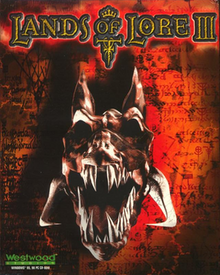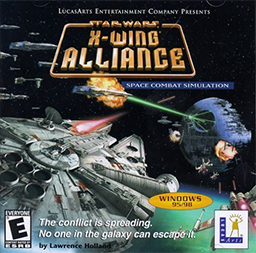
Star Wars: X-Wing Alliance, also known as simply X-Wing Alliance, is a space simulation video game, the sequel to both Star Wars: TIE Fighter and Star Wars: X-Wing vs. TIE Fighter. X-Wing Alliance presents the story of the Azzameen family, a family of space traders. The player assumes the role of Ace Azzameen, the youngest of the Azzameen children, juggling military duty as a fighter pilot for the Rebel Alliance, and allegiance to his family, flying larger heavily armed freighters for the family business, amid a bloody family feud and in the larger context of a galactic civil war.
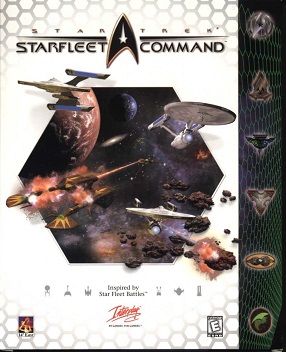
Star Trek: Starfleet Command is a computer game based on the table-top wargame Star Fleet Battles. It was developed by 14° East and Quicksilver Software and published by Interplay Entertainment. It was released in 1999 for Microsoft Windows. It simulates starship operations, ship-to-ship combat, and fleet warfare in the Star Trek universe. An expanded version was released in 2000 titled Star Trek: Starfleet Command - Gold Edition. It includes the latest patch and all the missions that were downloadable from the official website.

Darkstone: Evil Reigns is an action role-playing video game developed by Delphine Software International for Microsoft Windows and PlayStation. In 2014, the French publisher Anuman Interactive launched a remake available on iPad, iPhone and Android, with the cooperation of the original game's author Paul Cuisset.

Fallout 2: A Post Nuclear Role Playing Game is a 1998 role-playing video game developed by Black Isle Studios and published by Interplay Productions. It is a sequel to Fallout (1997), featuring similar graphics and game mechanics. The game's story takes place in 2241, 80 years after the events of Fallout and 164 years after the atomic war which reduced the vast majority of the world to a nuclear wasteland. The player assumes the role of The Chosen One, the grandchild of the first game's protagonist, and undertakes a quest to save their small village on the West Coast of the United States.

Nox is an action role-playing game developed and published by Westwood Studios and Electronic Arts in 2000 for Microsoft Windows. It details the story of Jack, a young man from Earth who is pulled into a high fantasy parallel universe and has to defeat the evil sorceress Hecubah and her army of necromancers to return home. Depending on the player's choice of character class at the beginning of the game, the game follows three largely different linear storylines, each leading to its unique ending. In the multiplayer, players can compete against each other in various game modes such as deathmatch and capture the flag, while the freely downloadable expansion pack NoxQuest added a cooperative multiplayer mode. The game was generally well received by critics and the media.
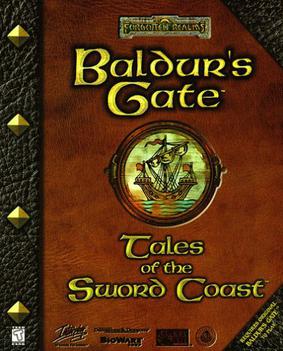
Baldur's Gate: Tales of the Sword Coast is an expansion pack of the fantasy role-playing video game Baldur's Gate. Developed by BioWare and published by Interplay, it adds 20 to 30 extra hours of gameplay, including the addition of four areas and minor tweaks to some of the mechanics. The expansion consists of four notable quests that take place within the same game world as Baldur's Gate, and sees players taking their character and their party of companions across the Sword Coast, from travelling to a distant island, to exploring the fortress dungeon of a dead dwarf. Tales of the Sword Coast sold 600,000 units by 2003.

Ultima IX: Ascension is the ninth and final part of the main series of the role-playing video game series Ultima. Developed by Origin Systems and published by Electronic Arts, Ultima IX was released in 1999 for Microsoft Windows after years in development hell. Following the Avatar's escape from Pagan, he is transported back to Britannia for one final battle with the Guardian, who is increasingly ruining the physical and moral fabric of that land by the use of eight columns. The Avatar must fight his way to the runes of virtue found in each of the columns, and cleanse them in the shrines of Virtue, then face off against the Guardian himself.

Heroes of Might and Magic III: The Restoration of Erathia is a turn-based strategy game developed by Jon Van Caneghem through New World Computing originally released for Microsoft Windows by The 3DO Company in 1999. Its ports to several computer and console systems followed in 1999–2000. It is the third installment of the Heroes of Might and Magic series.

Starlancer is a space-based science fiction flight simulator computer game, created by Erin and Chris Roberts, and developed by Warthog Games under the auspices of Digital Anvil.
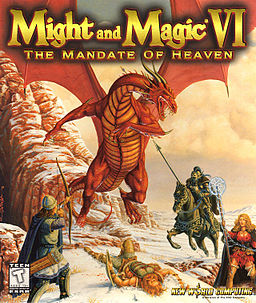
Might and Magic VI: The Mandate of Heaven, commonly abbreviated to Might and Magic VI or simply MM6, is a role-playing video game developed by New World Computing and published by 3DO in 1998. It is the sixth installment in the Might and Magic series, the sequel to Might and Magic V: Darkside of Xeen and the first of the Might and Magic titles to take place on the same planet as Heroes of Might and Magic. It continues the storyline of Heroes of Might and Magic II, and takes place at the same time as Heroes of Might and Magic III in the series chronology. The game was compared favorably to its peers, role-playing video games such as The Elder Scrolls II: Daggerfall. Critics praised it for its non-linear, user-friendly premise, an interactive, detailed game world and a polished, bug-free initial release. A Limited Edition version of the game was also released, including a cloth map of Enroth, a strategy guide and the first five games of the series on CD-ROM. It was followed by three sequels, with Might and Magic VII: For Blood and Honor directly continuing the story arc.

Might and Magic VII: For Blood and Honor is a role-playing game for Windows published in 1999 by 3DO and developed by New World Computing; it was re-released in 2011 on GOG.com. The game follows on from both the events of Heroes of Might and Magic III, and those of Might and Magic VI: The Mandate of Heaven. Players form a party of four characters who win a castle in a scavenger hunt and soon become embroiled in political events on the continent of Antagarich, on the world of Enroth, before eventually choosing one of two paths and working alongside a number of characters, whose storyline continues on from the events of Might and Magic III: Isles of Terra. The game, Might and Magic VIII: Day of the Destroyer is a sequel to Blood and Honor.

Might and Magic VIII: Day of the Destroyer is a role-playing video game developed for Microsoft Windows by New World Computing and released in 2000 by The 3DO Company. It is the eighth game in the Might and Magic series. The game received middling critical reviews, a first for the series, with several critics citing the game's length and its increasingly dated game engine, which had been left fundamentally unaltered since Might and Magic VI: The Mandate of Heaven in 1998. The game was later ported to PlayStation 2 in Japan and published by Imagineer on September 6, 2001.

Return to Krondor is a role-playing video game set in Raymond Feist's fictional fantasy setting of Midkemia. A sequel to 1993's Betrayal at Krondor, it was released for Windows on the PC in time for the 1998 Thanksgiving and Christmas season. Within the game, the player commands a group of heroes with different attributes, strengths, and weaknesses which the player may upgrade over the course of the game.
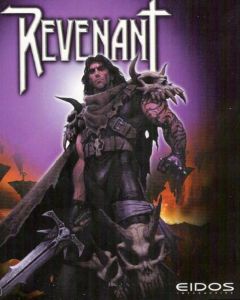
Revenant is an action role-playing video game produced by Cinematix Studios and released in 1999 by publisher Eidos Interactive.

Disciples: Sacred Lands is a turn-based PC strategy game published by Strategy First in 1999. Set in a fantasy world known as the Sacred Lands, it depicts a battle for dominance between four races of the world of Nevendaar: The Empire (humans), the Mountain Clans (dwarves) the Legions of the Damned (demons), and the Undead Hordes (undead). In 2001, an expanded version of the game was released titled Disciples: Sacred Lands - Gold Edition. It added 25 new scenarios.

Rage of Mages is a PC game that combines role-playing and real-time strategy. Produced by Nival Interactive it was first released in Russia under the name of Allods: The Seal of Mystery. The game was published in April 1998 in the EU by Buka Entertainment and on October 13, 1998 in the US. It was re-released in 2016 on GOG.com.

Lands of Lore: Guardians of Destiny is a 1997 action role-playing game, second installment of the Lands of Lore series, a sequel to Lands of Lore: The Throne of Chaos. It brought about a drastic change in gameplay style from its predecessor, opting away from the original's D&D turn-based style in favor of more action elements. A sequel, Lands of Lore III, was released in 1999.

MageSlayer is an action video game released in 1997. It was based on the Vampire engine, developed by Raven Software, along with Take No Prisoners. The engine provides a top-down view with 2D sprites for the character and monsters in a full 3D environment with dynamic and colored lighting. The score was composed by Kevin Schilder. MageSlayer marked another Raven Software collaboration with the fantasy artist Brom, who produced the box cover artwork for the game.

Warlords III: Reign of Heroes is a computer wargame released in 1997, and the third release in the Warlords video game series. In 1998 it was followed by the expansion Warlords III: Darklords Rising.

Wizards & Warriors is a role-playing video game for Microsoft Windows designed by David W. Bradley.
